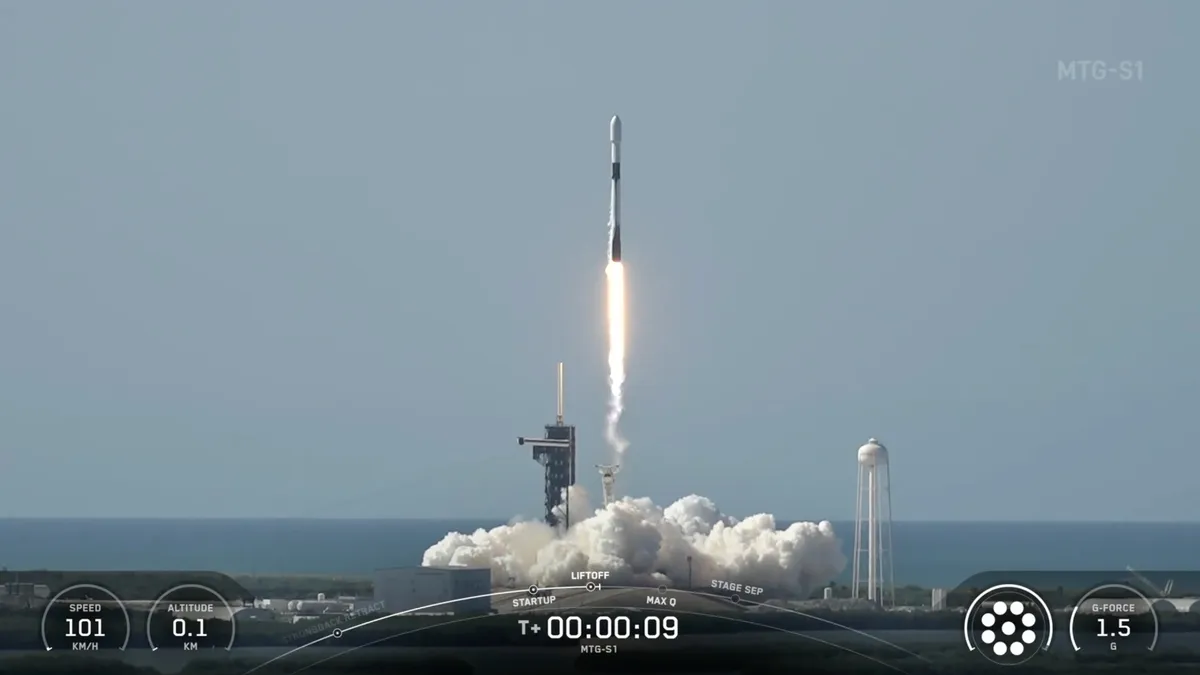
A SpaceX Falcon 9 rocket successfully launched an advanced European weather satellite and executed a flawless landing on a ship at sea. The Falcon 9 rocket lifted off from the historic Pad 39A at NASA's Kennedy Space Center in Florida on July 1 at 5:04 p.m. EST (2104 GMT). This mission carried the MTG-Sounder (MTG-S1) satellite towards its destination in geostationary transfer orbit, marking a significant milestone in space exploration and meteorological advancements.
Approximately 8.5 minutes after liftoff, the Falcon 9's first stage returned to Earth as planned, landing on the SpaceX drone ship Just Read the Instructions, which was stationed in the Atlantic Ocean. This marked the ninth successful launch and landing for this particular booster, designated as B1085. Notably, this booster has previously supported various missions, including the Fram2 private astronaut mission, NASA's Crew-9 flight to the International Space Station, and a January 2025 launch that delivered two private lunar landers: Firefly Aerospace's Blue Ghost and ispace's Resilience.
The Falcon 9's upper stage deployed the MTG-S1 satellite approximately 35 minutes after liftoff, as per the mission plan. The satellite is now on its journey to reach geostationary orbit (GEO), situated at an altitude of 22,236 miles (35,786 kilometers) above Earth. At this specific altitude, the satellite's orbital speed matches Earth's rotational speed, allowing it to hover over the same geographical area continuously. This unique characteristic makes GEO a favored destination for weather and reconnaissance spacecraft.
MTG-S1 is the second satellite in the Meteosat Third Generation (MTG) series to be launched, following the inaugural MTG-I (MTG Imager), which took off atop an Arianespace Ariane 5 rocket in December 2022. The MTG satellites are operated by the European Organisation for the Exploitation of Meteorological Satellites (EUMETSAT), an international organization based in Germany, comprising 30 member states.
After a checkout period, MTG-S1 will utilize its infrared sounder instrument to gather crucial data on temperature, humidity, wind, and trace gases. This data will be instrumental in generating 3D maps of the atmosphere, thereby enhancing the accuracy of weather predictions, as highlighted by European Space Agency (ESA) officials. The satellite will provide comprehensive coverage of Europe and parts of northern Africa on a 15-minute repeat cycle, offering meteorologists a complete weather picture of the region. This functionality will complement the data on cloud formation and lightning provided by the MTG-I satellite.
In addition to its weather monitoring capabilities, MTG-S1 also carries an instrument designated for the Copernicus Sentinel-4 mission, part of the European Union's Earth-observation program. This instrument is an ultraviolet, visible, and near-infrared light (UVN) spectrometer, designed to monitor air quality over Europe and North Africa on an hourly basis, according to ESA officials.
The UVN spectrometer provides high-resolution data on various gases that impact air quality, including a wide range of atmospheric trace gases and pollutants such as nitrogen dioxide, ozone, sulfur dioxide, and formaldehyde. This mission will complement the existing Sentinel-5 and Sentinel-5P missions, which deliver daily Earth observations from their polar orbits, thus enhancing our understanding of atmospheric conditions and promoting public health through improved air quality monitoring.